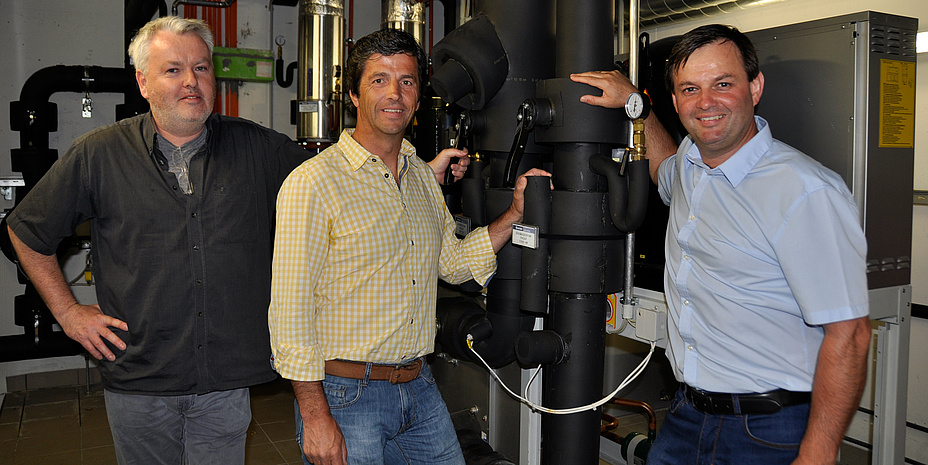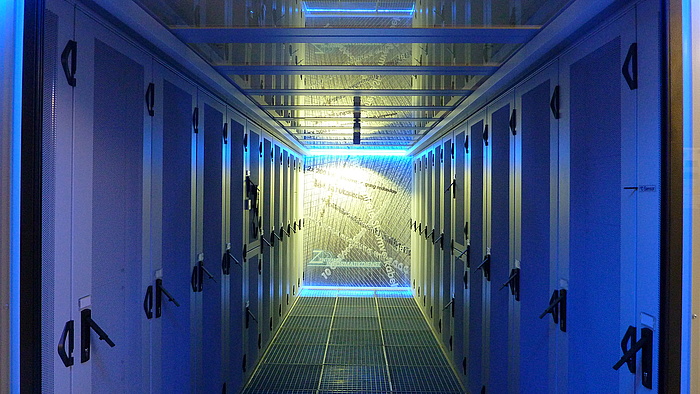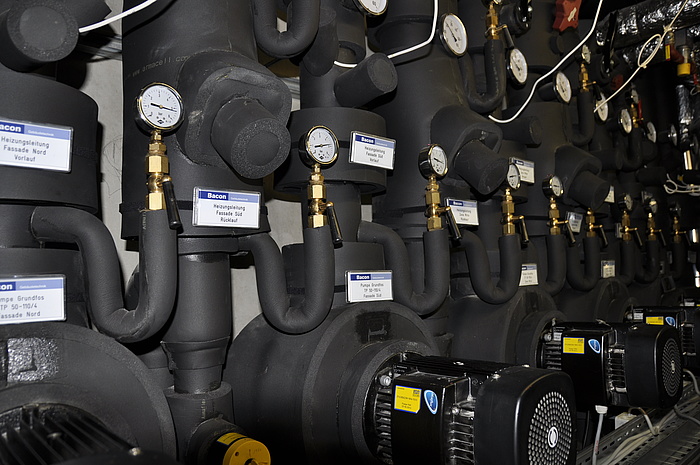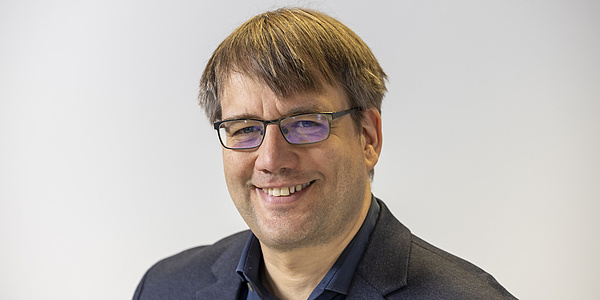Computers keep their cool

150 hairdryers
The computers in the computer centre are veritable number crunchers whose power can be hired for research projects. “Computer calculations are carried out here which need weeks, months or even years,” explains Prem. Breakdowns could have fatal consequences for the computational processes being performed. “The biggest problem for such high-performance computing infrastructure is not the power supply, but the cooling system,” he explains. The computing power in a state-of-the-art cluster room currently amounts to not less than a constant 120 Kilowatt. With the available infrastructure running at full capacity, this corresponds to about 150 hairdryers running simultaneously.
Sophisticated cooling system
A sophisticated cooling system with two redundant chillers whose core component is made up of four circulating-air cooling units running in parallel in the adjoining room provides the right working temperature. What is unique about it is that the heat is not simply lost as in other buildings. It is conveyed into about 100 earth probes by means of a geothermal system using two heat pumps some 120 metres into the ground and heats up the storage unit to 32 degrees. “In winter we recover this heat to heat the building,” explains Horst Gangl, who works in the Technical Facility Management in the Buildings and Technical Support service department. He plans and organises the regular maintenance work on the system which, besides high-quality hardware and reliable process control, is the small cog in the huge machine ensuring safety and reliable operation. And up to now this interaction has worked quite well, says Gernot Prem: “Touch wood – we’ve never had a big breakdown or problem in three years.”
He plans and organises the regular maintenance work on the system which, besides high-quality hardware and reliable process control, is the small cog in the huge machine ensuring safety and reliable operation. And up to now this interaction has worked quite well, says Gernot Prem: “Touch wood – we’ve never had a big breakdown or problem in three years.”Many advantages
Siegfried Pabst, who also works in Technical Facility Management, is responsible for the energy management and sees many advantages in this modern system. With the help of this unique construction we manage to keep the heating and cooling costs very low for the whole complex of Inffeldgasse 13 and 19 – that means the PTZ with an effective area of some 9,900 m². “It’s only because of the surplus energy from the cluster room that the system works so well,” explains Pabst. For him working at TU Graz offers very interesting challenges: “It is a fact of the job that we’re confronted again and again with planning the logistics and optimum interaction between the component parts of these complex technical systems.”
Kontakt
<link int-link-mail window for sending>horst.gangl@tugraz.at Siegfried PABST
Dipl.-Ing.
<link int-link-mail window for sending>siegfried.pabst@tugraz.at Gernot PREM
Ing.
<link int-link-mail window for sending>prem@tugraz.at




